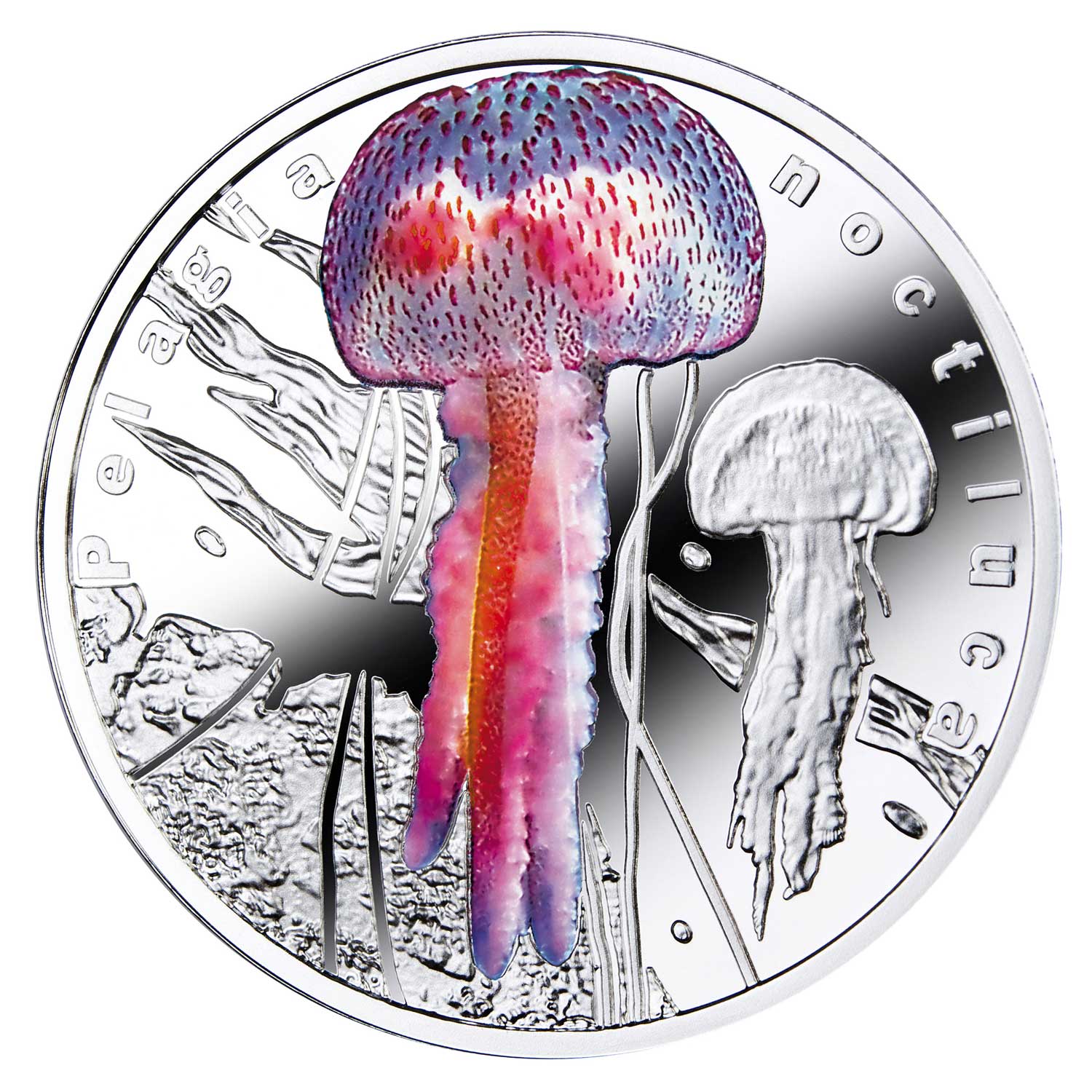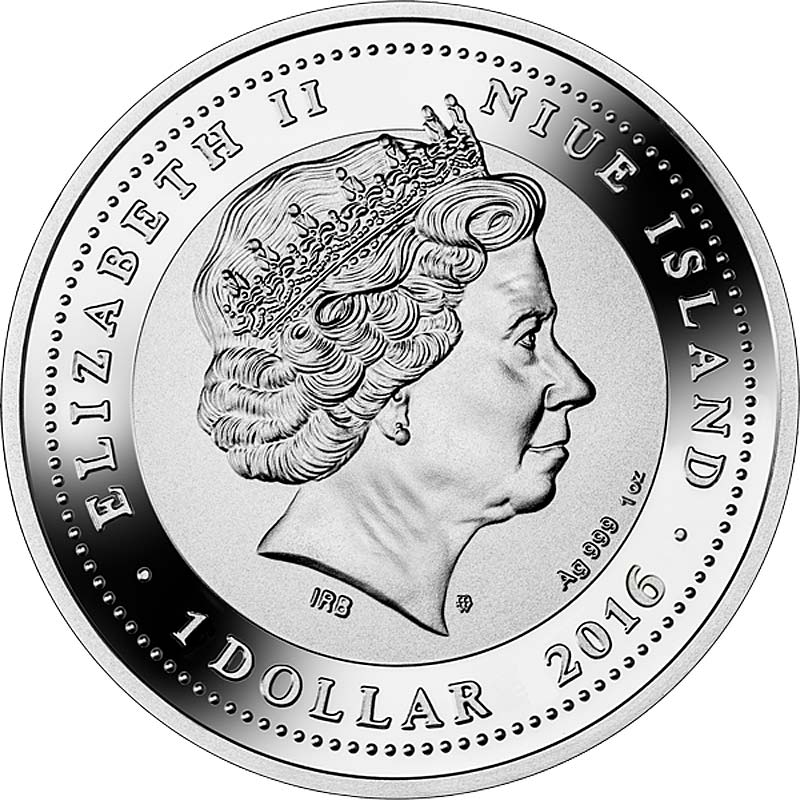Known for their multiple series of coloured, ½oz silver nature coins, the Mint of Poland is building it up with the debut of another new series. Called Bioluminescent Animals, it looks at creatures in nature that produce their own light. The choice of glow-in-the-dark colouring in this context is a great idea.
First to launch is an obvious choice, a jellyfish, in this case Pelagia Noctiluca, known in Europe as the Mauve Stinger. It’s found in almost all of the worlds warm and temperate oceanwaters and has the ability to bioluminesce, or produce light. Light is given off in the form of flashes when the medusa is stimulated by turbulence created by waves or a ship’s motion. This flashing is only of relatively short duration and gradually fades.
This jellyfish travels in huge shoals, some a phenomenal 45 kilometres in length. They are carnivorous, preying mainly on zooplanktons, other jellyfish, small fish etc. Tentacles are armed with nematocysts with barbed filaments loaded with toxins to kill prey. The sting is venomous to humans, although rarely fatal. To give an idea of how destructive swarms of these can be, on November 21, 2007, a 26 km2 swarm of P. noctiluca wiped out a 100,000-fish salmon farm in Northern Ireland.
The coin design is typical Mint of Poland, colour applied on the main design element, with the rest cleanly struck. The large colour Pelagia is well done and will glow in a darkened room (roll your mouse over the image below to see). Inscriptions are kept to just the latin name of the species, the rest being moved to the obverse, the standard Niue affair from this mint. We haven’t seen packaging yet, but they’re claiming a “specially designed presentation case”, and they rarely disappoint. Available to order from various dealers now, prices should be around $120 USD.
COIN IMAGES
MINTS DESCRIPTION
HAVE YOU EVER WONDERED HOW FASCINATING THE WORLD AROUND US CAN BE?
In fact we share our planet with really peculiar animal species! Living in the murky depths of the sea, PELAGIA NOCTILUCA is a bizarre species of a luminous medusa. A coin featuring this interesting animal is a real treat for lovers of nature and connoisseurs of numismatics! The reverse of the collectible is decorated with high-end digital printing glowing in the night. Thanks to it the medusa featured on the coin looks extremely lifelike!
INNOVATIVE DECORATION – LUMINESCENT DIGITAL PRINTING!
In Latin, PELAGIA means “coming from the sea”, nocti stands for “night”, whereas luca means “light”. Light is given off in the form of flashes when the jellyfish is stirred up by turbulence created by waves or a ship’s motion. Being a cnidarian, it poses a significant threat to human health! Poisonous tentacles of the jellyfish can painfully sting a swimmer. Fortunately for the beachgoers, Pelagia noctiluca is a deep-sea animal. If you like to admire its bioluminescent abilities, better visit an oceanarium!
REVERSE: In the central part of the coin – colorful image of Pelagia Noctiluca. On the right-hand side of the coin – relief image of the species. In the background – stylized decorative surface. Along the rim – name of the species in Latin: Pelagia noctiluca.
OBVERSE: In the central part of the coin – effigy of Her Majesty Queen Elizabeth II. Below it – mint mark: m/w, hallmark: Ag 999. Along the rim – inscriptions separated by decorative dots: ELIZABETH II, NIUE ISLAND (issuer), 1 DOLLAR (face value), 2016 (year of issue).
SPECIFICATION
| DENOMINATION | COMPOSITION | WEIGHT | DIAMETER | FINISH | MINTAGE | BOX / COA |
|---|---|---|---|---|---|---|
| $1 NEW ZEALAND | 0.999 SILVER | 17.50 g | 38.61 mm | PROOF | 999 | YES / YES |











Beautiful in light or darkness.
Thanks for that. We’re having a little potluck party this week, kind of for Christmas I guess and I’ve been trying to find something special to take.. found some awesome ideas at this site. You know, someone should invent a website where you can write what you’ll be taking, and it would check no one brings the same thing!